

Ar 196A-3
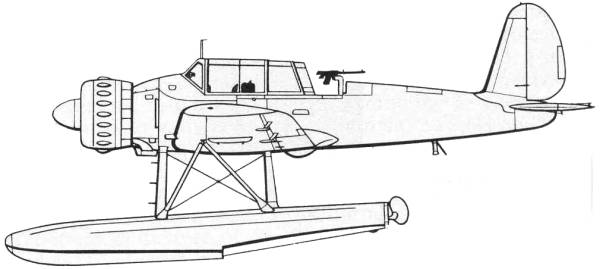
The Arado 196 was designed to be a replacement for the He 60 for use on the catapults of the principle German warships. The 196 was designed in 1937 and first flew in 1938. Four prototypes were built, two with twin floats and two with a single main float and stabilizing floats under each wing. After testing it was decided to standardize on the twin float version and the first production model, the Ar 196A-1, began production in late 1938. The first production deliveries were made in August of 1939 with 26 having been delivered by the end of the year. These were allocated to the principle German warships. Several of these were launched by the Bismark to drive away the RAF Catalina's that were shadowing the battleship during its one and only sortie into the Atlantic. During 1940 the A-1 was succeeded by the A-3 version intended primarily for coastal reconnaissance and patrol. It had newer radio equipment and the addition of 2 20mm MG FF cannons in the wings and twin MG 17 machine guns in the rear cockpit as well as a higher horsepower engine. In the Mediterranean and Adriatic it was used for anti-submarine patrols and for attacking light marine aircraft. It was also used in the convoy escort role and in the Channel was employed in hunting RAF Whitleys which patrolled the route taken by U-boats entering and leaving their pens on the French coast. They were also built in France by the S.N.C.A. plant and by Fokker in the Netherlands. Arado stop producing them in 1943 and total production from all sources including prototypes was 493 machines.
The Kit
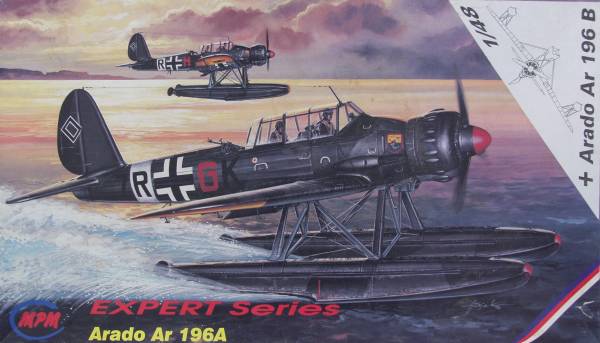
The MPM kit comes in a two part top open box with nice artwork on the top. Inside there are two large bags of sprues, a bag with the clear parts, a bag with the resin parts and a bag with the decals. Of the two sprue bags, one had all the parts for the "B" version and the second bag had the additional parts necessary for the "A" version, primarily the second float. The parts are molded in a light gray plastic with a smooth but blotchy looking finish. The parts feature recessed panel lines and fastener detail. The panel lines are relatively fine and uniform and the demarcation lines for the control surfaces are suitably larger. The larger parts have a light amount of flash, the smaller parts have a lot more flash. I found no sink holes but there is some surface debris that will need to be cleaned up.
The kit, being limited run has no alignment pins and judging from the looks of the mating surfaces you will want to sand them lightly on a flat surface before attempting assembly. The control surfaces are all fixed and the fabric covered surfaces are very well depicted and that's a good thing as the entire aft section of the fuselage is fabric covered. The cockpit is rather nicely appointed with separate side walls so you don't need to fix those ejector pin marks inside. Most of the cockpit details are rendered in resin.
The engine is made up of a crankcase with separate cylinders. While this usually adds an additional layer of detail, the cylinders are rather heavily flashed and the separate push rod piece had a short shot in my kit. For some reason you get two sets of cylinders so if you ruin one trimming flash there are plenty of extras. The nasty issue with the engine is that the cowling is molded in two halves, front and rear and the seam line falls in the middle of the bumps on the cowling for the valve rockers making seam clean up a nasty chore. The kit comes with a stand if you decide to build the "B" model. There are instructions for rigging the floats but no material is supplied.
As mentioned earlier the extra parts for the "A" model were bagged separately and this just includes a duplicate sprue with the float. The "B" model used a two bladed prop and the "A" model used a three bladed prop. The float sprue has the spinner, backing plate and props on it but the spinner is molded to accept two blades. For the three bladed prop one will need to fill in the two holes provided and mark and drill the locations for the three blades. This will obviously require some care to yield a symmetrical prop.
The resin parts, though not up to the quality of some of the after market folks, is still nice and I only found one pin hole and no short shots. the parts include a few external parts such as oil cooler intake scoop, engine air intakes and bomb racks. No bombs are supplied.
The clear part is vacuformed and you get two of them, a good thing as one of mine had a crease in it. It is clear with clearly defined frame lines. Kit parts total as follow; gray parts 94, resin parts 39, clear parts 2 for a grand total 135. Bear in mind that close to 20 parts will not be used depend on your choice of version. See photos below for kit parts.
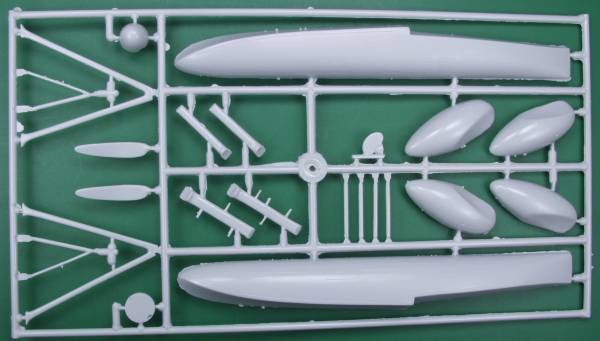
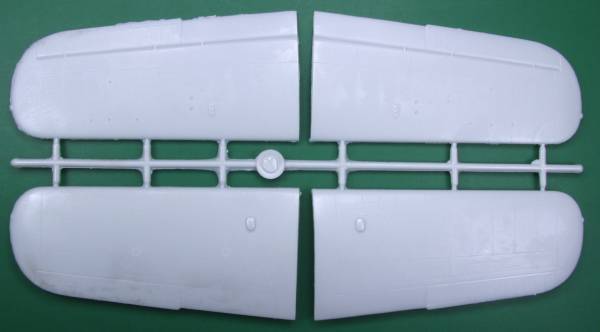
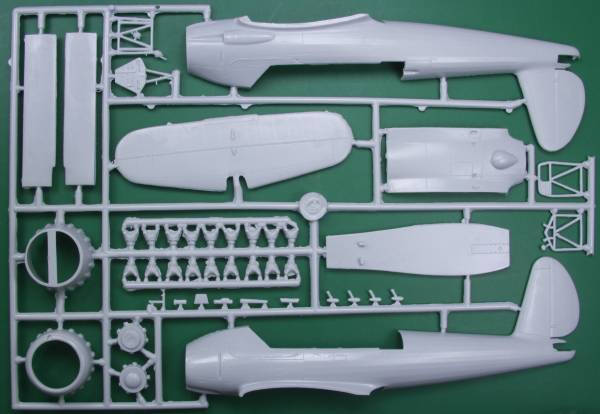
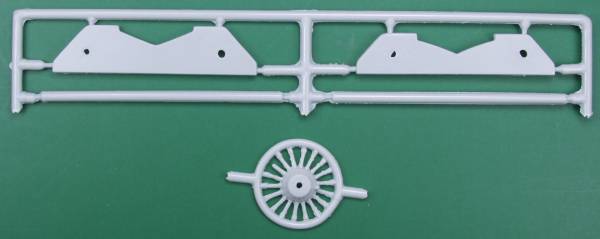
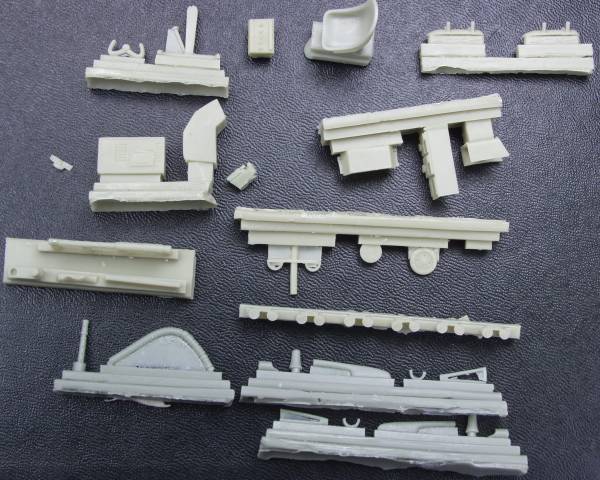
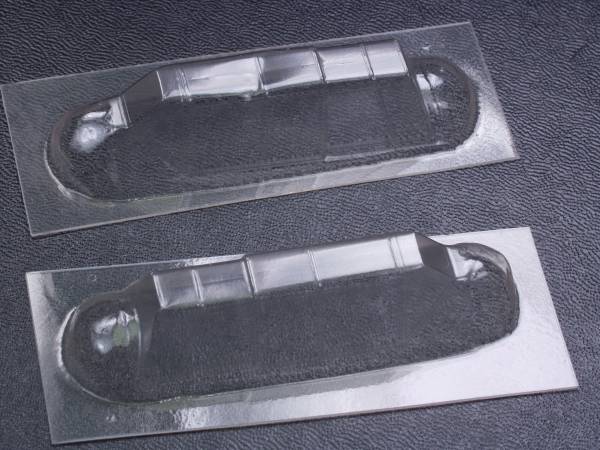
The decals are thin and well registered and include only hand hold and warning stripes beyond the national markings. The decals include markings for two aircraft, one from the Aegean Sea in 1942 and the other for an aircraft assigned to the Admiral Graf Spee in 1939. They do include swastikas, albeit the assemble your self variety. The kit was apparently supposed to contain two different sheets, one for the "A" model and one for the "B" model however I got two identical sheets for the "A" instead. See photo below.
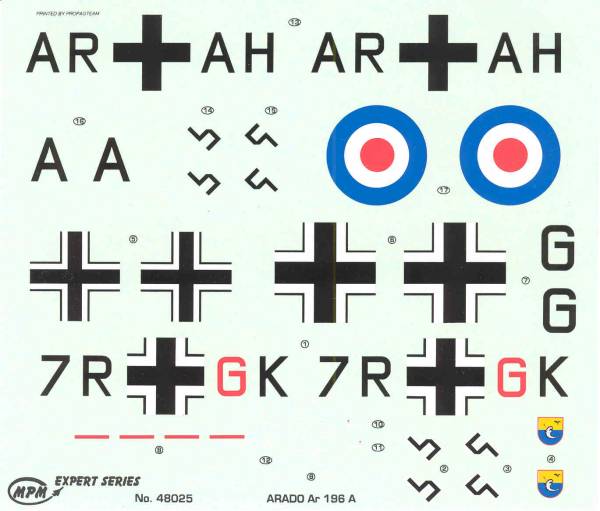
The instructions are printed on two A4 sized sheets folded to make a booklet of eight pages. Page one has history in four languages and a plan form drawing, page two has a parts map, color call outs by color name only again in four languages and assembly icon descriptions. Pages three, four and five have assembly steps. Pages six and seven are camouflage and markings and page eight is a listing of other MPM kits. There is a separate A4 sheet printed on both sides illustrating the assembly differences for the "B" model. It indicates that there should be markings for two aircraft, the V4 and V5, both from 1937 however I did not get that sheet in my kit, getting instead two identical sheets for the "A" model. Not a big deal for me as there were only two built with single floats.
After Market Goodies
I opted for two after market items for this kit, the first is an engine from Vector [48-011b]. These kits are real jewels and should enhance the kit quite a bit. See photo below.
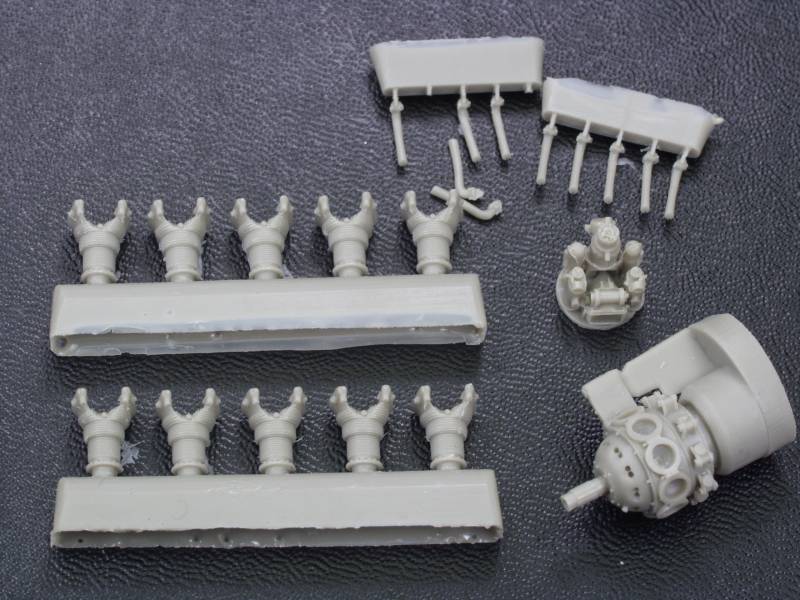
The only other item I chose was a set of Moskit exhaust stacks. I did not photograph these as they are very delicate and I did not want to remove them from their protective packaging. Moskit is no longer in business so obtaining them may be difficult.
Like many other kits from this company this one should prove challenging although the kit review listed below seemed to indicate that it should go together reasonably well. As is the norm for limited run kits trial fitting the parts is an absolute necessity and it can be expected that a large amount of assembly time will be spent cleaning up flash and smoothing up mating surfaces. with all that is supplied with this kit it should produce a really nice looking finished model. I would recommend it only for those who have completed a few limited run kits and know what you are getting into.
Links to kit build or reviews
The only review I could find is here.
References
"War Planes of the Third Reich" by William Green
Updated 5/13/08